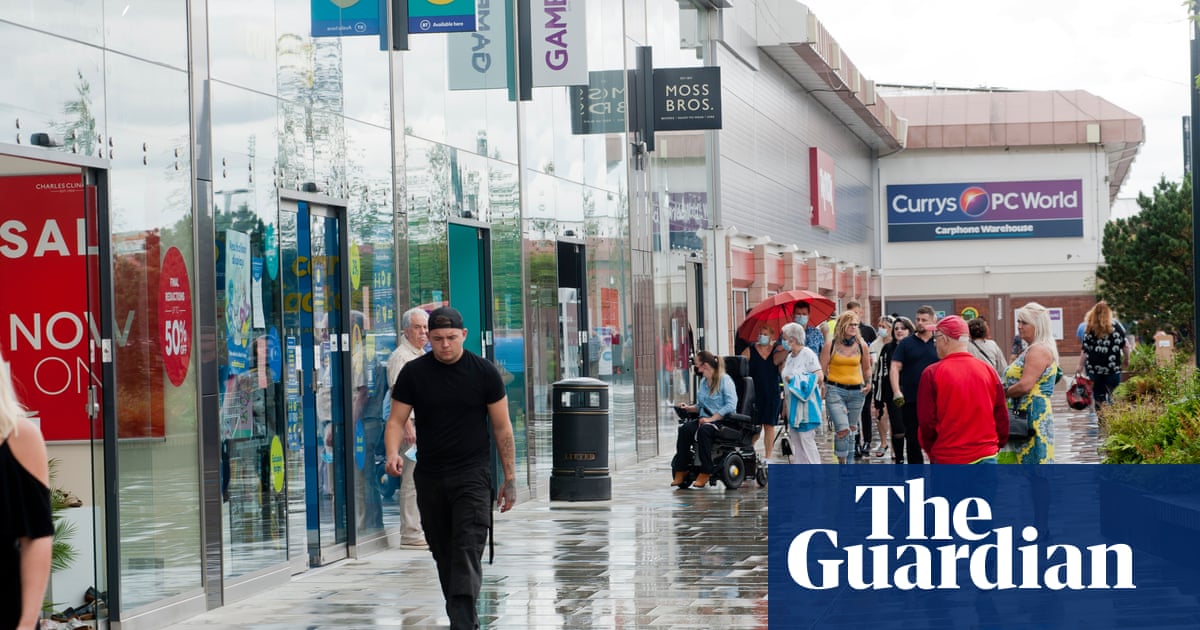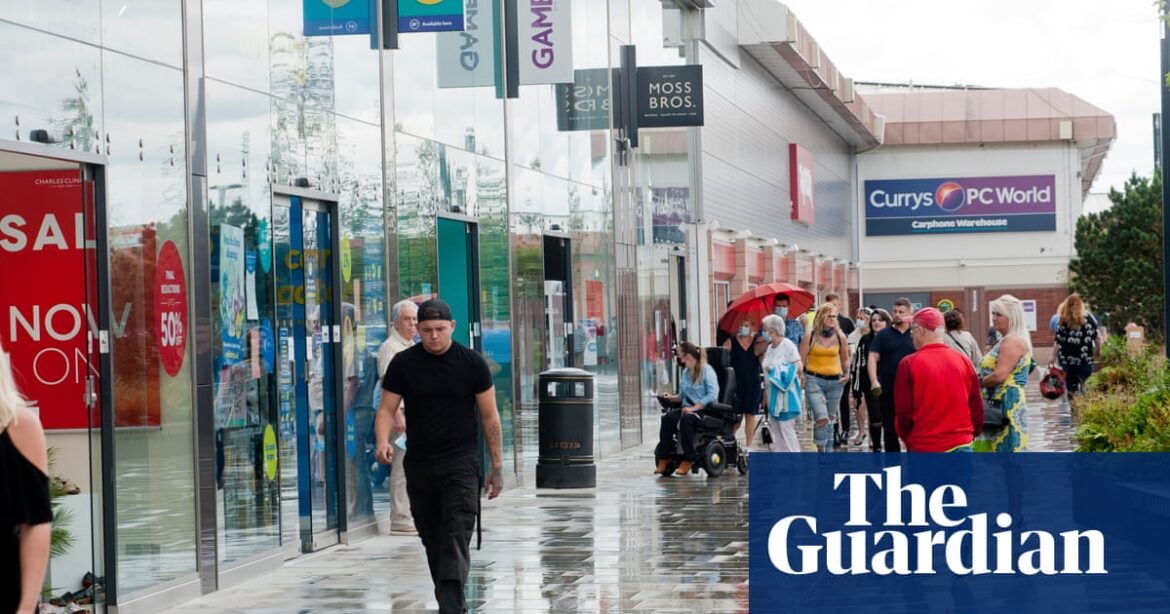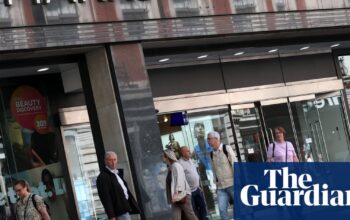
Retailers have called on the government to rethink business rates and planning laws to revive high streets and shopping centres after visitor numbers fell again in May.
Shoppers at stores on high streets, shopping centres and retail parks decreased by 3.6% in May, maintaining a trend that began last summer as a mini-boom in high street visits after the pandemic lockdowns petered out.
Shopping centres were the hardest hit but all three types of retail destination were down as poor weather combined with negative consumer sentiment and the shift to working from home and online shopping to hit visitor numbers.
Helen Dickinson, the chief executive of the British Retail Consortium trade body, which represents most major retailers, said: “With an election only five weeks away, political parties have a role to play by having policies that mean retailers can invest in rejuvenating shopping destinations across the UK.
“A broken business rates system and outdated planning laws are holding back the industry – politicians of all stripes must address these issues. This will boost economic growth, lift consumer spirits, and help drive more shoppers back to our high streets and other retail destinations.”
Labour has pledged to replace business rates with a new system of business property taxation as part of a five-point plan to revive high streets, while the Conservatives have held several consultations on the matter – but failed to change the system during their time in office.
Retailers were still hopeful an improvement in the weather and events such as the Olympics and football’s European Championships would encourage shoppers to hit the high street, said Dickinson.
Diane Wehrle, an expert on town centres at Rendle Intelligence and Insights, said poor weather would have reduced visitor numbers but the drop was led by an “underlying structural shift” away from physical shops as well as households’ efforts to save money because of a surge in the cost of essentials such as food and energy bills.
“Wage inflation is now outpacing price inflation but there’s a lag as time is required for consumers to react. They have had a year of struggling and probably using their savings.”
after newsletter promotion
She added that the shift to working from home had enlivened some smaller towns but led to quieter streets in big cities, particularly on Mondays and Fridays. On the positive side, fewer shoppers did not necessarily mean less money spent in shops as people were doing less browsing and those who visited town centre were more inclined to spend.
Source: theguardian.com



